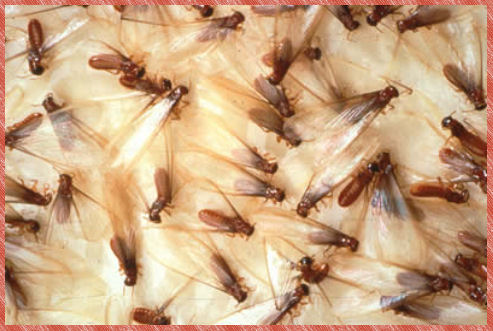Termites
Widely considered the most destructive pest in Cyprus, a termite infestation can completely destroy an entire building if the problem is not treated in time by a professional.
Termites are small, white, tan, or black insects that can cause severe destruction to wooden structures. And since buildings in Cyprus always have wooden frames, every building in the country is vulnerable to attack.
Termites belong to the insect order Isoptera, an ancient insect group that dates back more than 100 million years. The Latin name Isoptera means "equal wing" and refers to the fact that the front set of wings on a reproductive termite is similar in size and shape to the hind set.

Termites are social and can form large nests or colonies, consisting of very different looking individuals (castes). Physically the largest individual is the queen. Her function is to lay eggs, sometimes thousands in a single day. A king is always by her side. Other individuals have large heads with powerful jaws, or a bulblike head that squirts liquid. These individuals are called soldiers. But the largest group of termites in a colony is the workers. They toil long hours tending the queen, building the nest, or gathering food. While other species of social insects have workers, termites are unique among insects in that workers can be male or female. Surprisingly, termites can be long-lived: queens and kings can live for decades while individual workers can survive for several years.
As termites live up to twenty feet underground, infestations come directly from the earth, exposing anything touching the ground to their destructive appetite. They come into the house through cracks or dampness and feed on anything wood-derived. Some termites have wings, while others don't.
Signs of termite infestation include swarming of winged forms in autumn and spring and evidence of tunneling in wood (tiny holes). Darkening or blistering of wooden structural support is another indication of an infestation; wood in damaged areas is typically thin and easily punctured with a knife or screwdriver.

